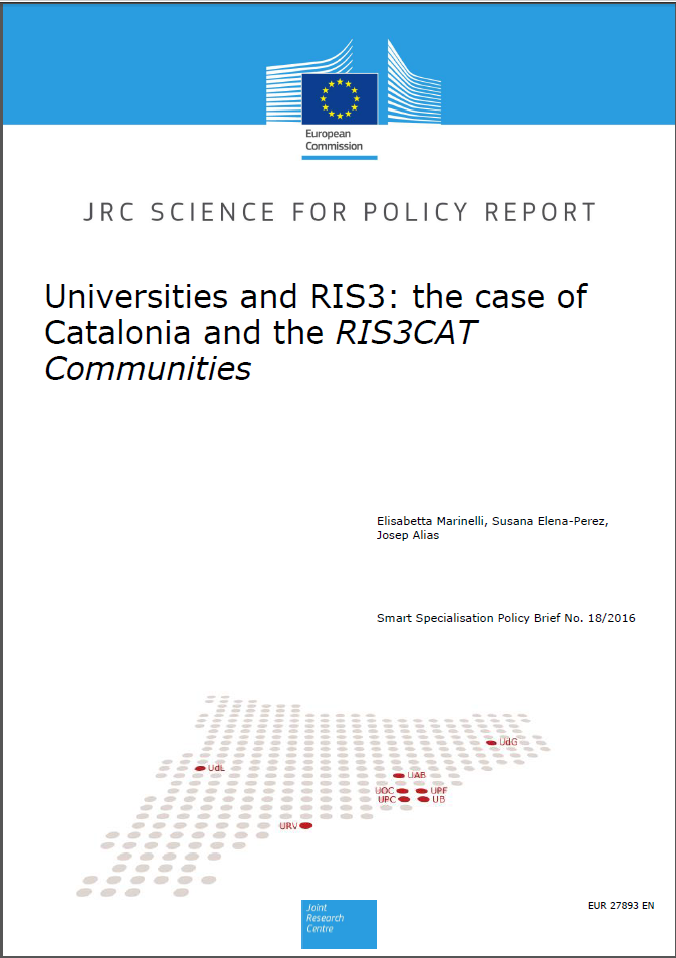Universities and RIS3: the case of Catalonia and the RIS3CAT Communities
This report contributes to the debate on the role of Higher Education Institutions in RIS3 by exploring the case of Catalonia. It first assesses the role of universities in the overall design and implementation of the Catalan RIS3 and EDP, and then goes in depth into one of its key instruments, namely the RIS3CAT Communities. The latter provide a platform for triple-helix stakeholders to interact and agree on a set of collaborative projects, which can be partially funded by public resources. Based on in-dept interviews with senior university managers and desk-based research, the study highlights how HEIs are evolving and adapting to the new policy environment and identifies the advantages and challenges posed by RIS3CAT Communities as a policy instrument.
Abstract
The study allows extrapolations relevant to other EU regions and to furthering the conceptual RIS3 framework.
• The EDP must be intended as continuous process that goes from priority identification to the definition and implementation of policy instruments, aimed at pursuing innovative and collaborative projects.
• As such, the EDP requires the government to act as or provide a platform for stakeholders’ interaction and RIS3 implementation. RIS3CAT Communities are a good example of this new role of government and one from which other regions can take inspiration.
• In RIS3 is not sufficient to engage stakeholders at the planning level. It is beneficial to consult stakeholders in the actual definition of policy instruments, in order to be able to identify potential bottlenecks and ensure that each stakeholder is well positioned to take part and contribute to the process with its resources and capabilities.
• In this respect, it is important to stress that universities, SMEs and large firms, have different strengths and financial regimes. Such heterogeneity should be better exploited, without limiting cash-short actors.
• Whilst the road ahead is challenging for HEIs, which face a policy environment that is changing faster than their organizational culture, universities are showing both resilience and leadership in taking up the challenge of being a key actor for local development. The RIS3 approach builds coherently on this evolution and has the potential to leverage it for the benefit of regions and local communities.
Series
18/2016
